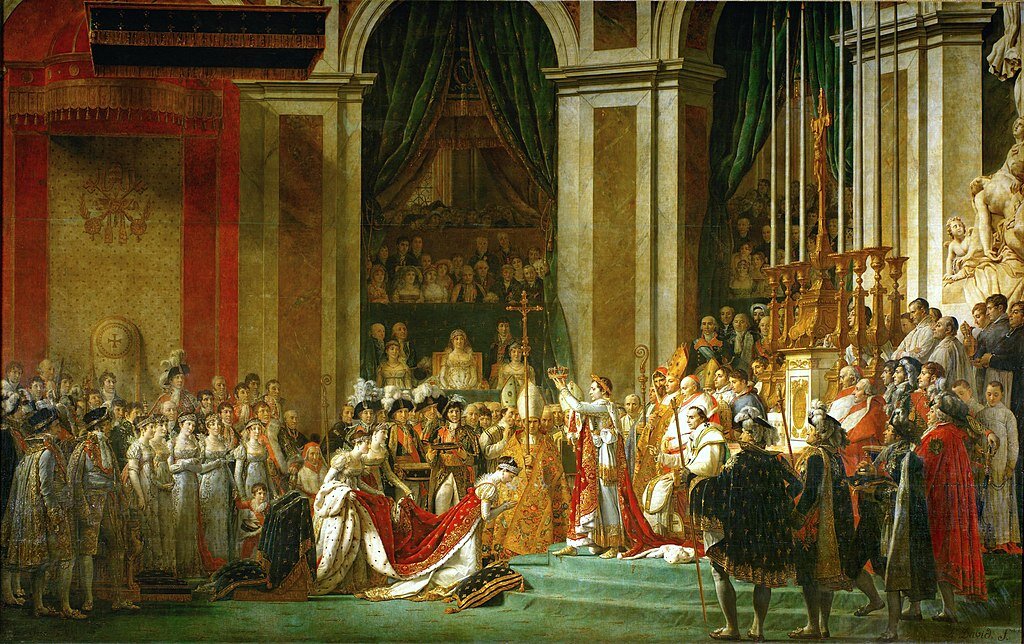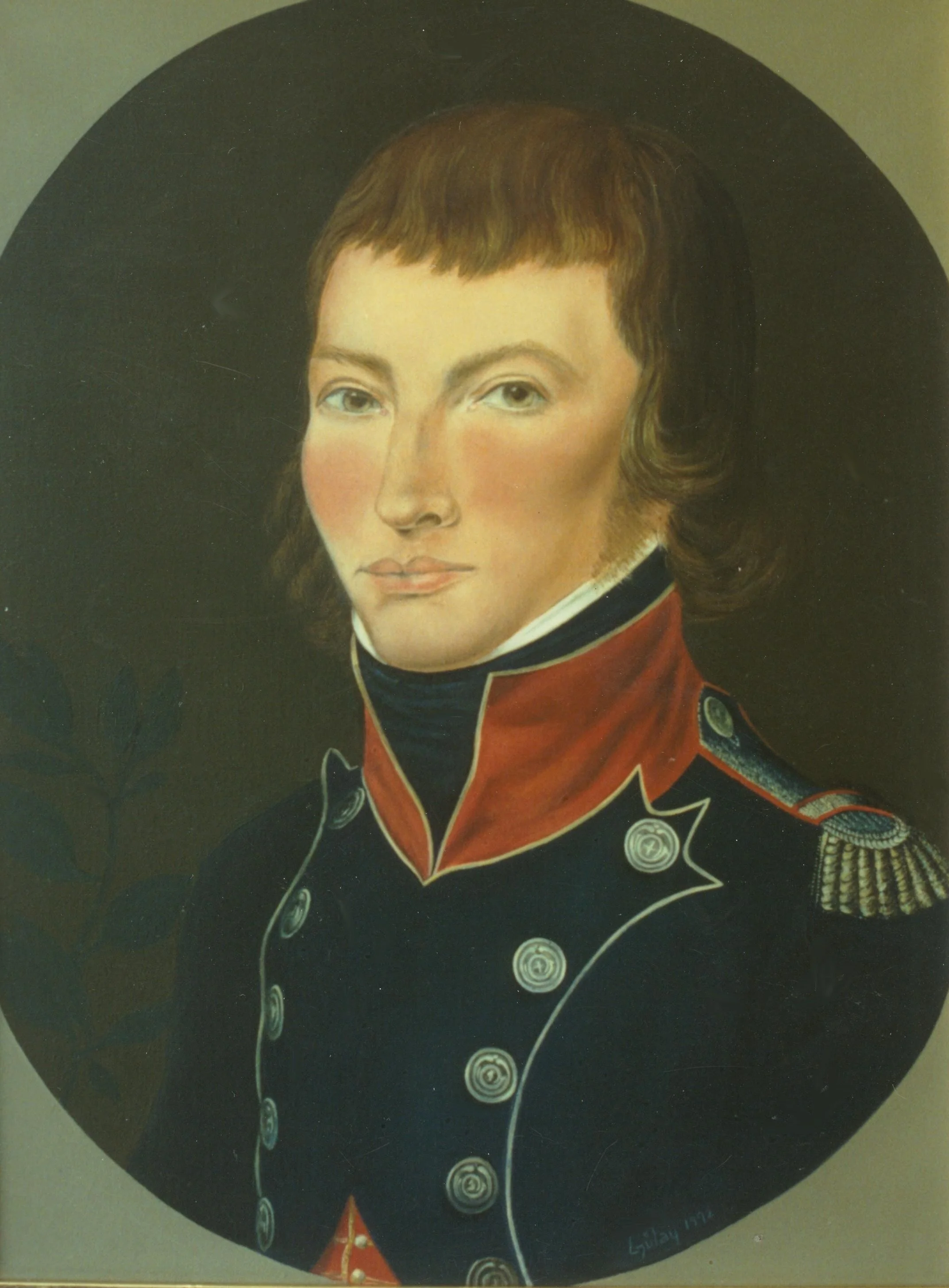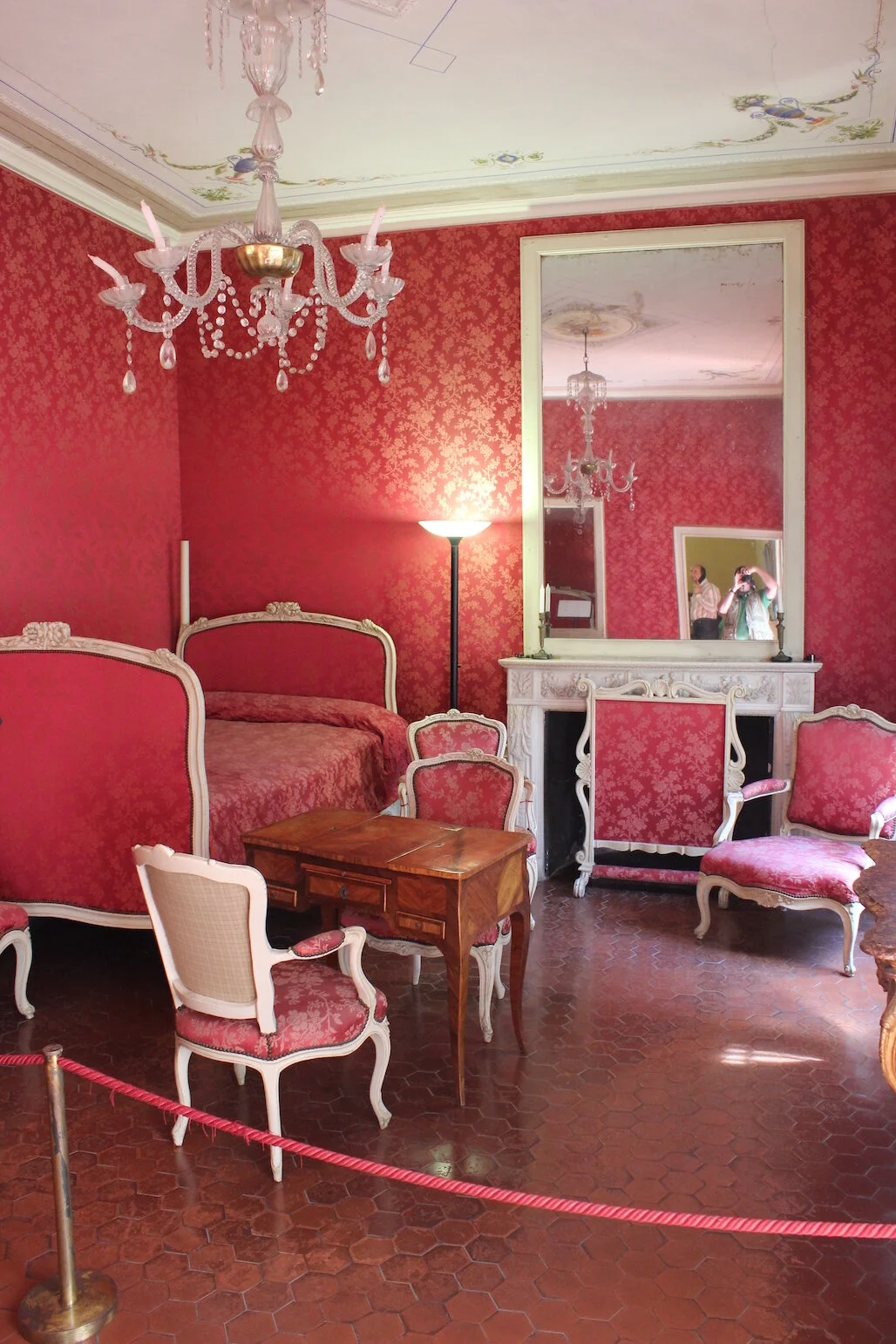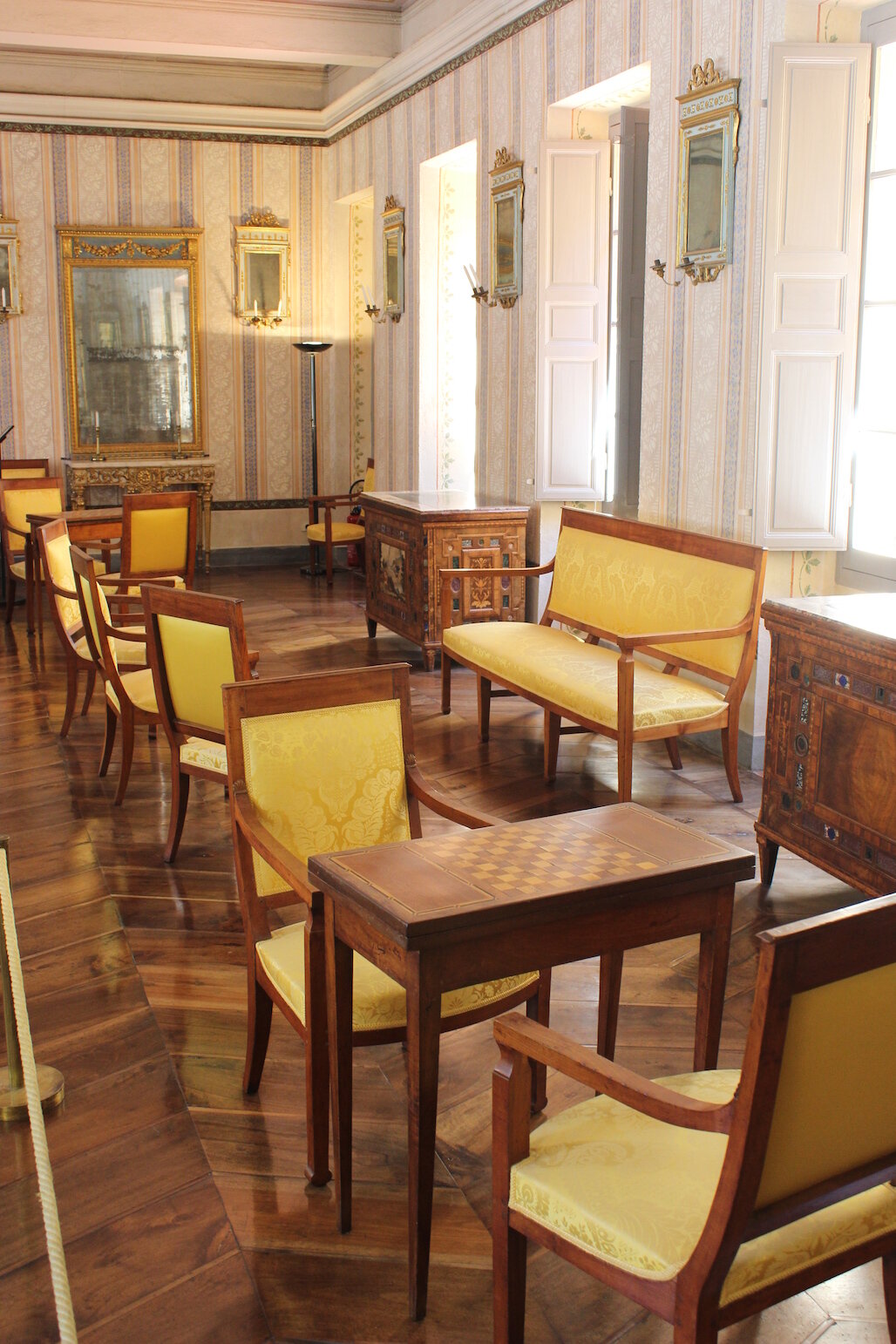How art history can meet up with modern-day life in unusual ways
Dear Friends and Art Lovers,
Here’s a little change of pace: how art history can meet up with modern-day life in unusual ways! At times, it is nice to back away from the easel for just a bit and delve into the past. I like to re-visit in my mind especially memorable places and museums I have seen, or maybe recall people or events which played a role in influencing the way I understand and look at things. This often also helps me choose the subjects I paint, in coming up with the overall composition and the painting style I use to most effectively convey the image which I see in my mind to the viewer’s eye.
The Coronation of Napoleon by Jacques-Louis David
One of the paintings in the Louvre Museum which fascinated me during my art student days in France was the enormous ‘Coronation of Napoleon’, about 20’ high by 30’ wide, done by the neo-classical realist painter Jacques-Louis David (1748-1825). David lived during tumultuous times in French history. He was a friend of Maximilian Robespierre, a major figure in the French Revolution, and David was himself very involved in political life. He bore a very noticeable scar on the left side of his face, the result of a fencing wound from a sword, which sometimes could affect his ability to speak clearly. Along with this fearsome look, David’s reputation among his art students was that he was not always easy to get along with although they recognized his artistic genius. He was France’s leading artist at the time, specializing in historical events and portraiture. David’s work came to the attention of France’s new leader, Napoleon Bonaparte. He was present at the coronation of Napoleon as Emperor which took place on Dec 2, 1804, inside Notre Dame cathedral in Paris. Napoleon commissioned David to do a painting of the coronation ceremony. David worked on it for two years (1805-07) in a studio inside the chapel of the present-day Cluny museum. There are well over a dozen recognizable participants in the painting. He had use of the architectural plans of Notre Dame and a number of the notables present came by and posed for him individually at different times including Pope Pius VII, Empress Josephine, and Napoleon’s sister, Caroline Murat. I always admired how David was able to place so much detail into the composition working largely from memory. He very effectively used light to convey the many different textures and colors of the regal clothing being worn, used this to also emphasize how the faces of all the guests are looking toward Napoleon, and he was able to recreate the vastness of space inside the cathedral.
I didn’t suspect then that the subject of Napoleon would re-enter my life many, many years later. It turned out that on the French (maternal) side of my husband Clyde’s family, a distant ancestor was one of Napoleon’s youngest generals, Baron Alexis-Joseph Delzons (1775-1812). He distinguished himself at the Battle of Borodino but shortly afterward, died early on in the fighting during the retreat from Moscow. There was a portrait of General Delzons which hung in the study of the family’s ancestral home in Auvergne. Named ‘Monthely,’ this home is set in a lovely wooded park and it held pleasant memories of summer vacations for Clyde and his many cousins, aunts, and uncles. So in due time, I painted both a faithful copy of the early 19th-century portrait of the General and my own architectural landscape rendition of ‘Monthely’ during the sunny summer months.
General Alexis-Joseph Delzons (1775-1812) by Gulay Berryman (18” x 24”)
Monthely, France by Gulay Berryman (24” x 30”)
And to add even further to the Napoleonic connection, would you believe that my in-laws would one day move from their idyllic home in the Green Mountains of Vermont (it was those rough winters!) to a new house in warm and beautiful Corsica?! As a result, vacations to this lovely Mediterranean island have sometimes included a visit of Napoleon Bonaparte’s family home in the old quarter of the capital of Ajaccio or else, to scenic ports and inlets where his nemesis, Admiral Lord Horatio Nelson, would drop anchor with his squadron of Royal Navy ships of the line!
Let me tell you, everywhere you look in Corsica is beautiful and I can easily see some more Mediterranean scenery among my future paintings!
Ajaccio - A bedroom in the Bonaparte home
Ajaccio - Sitting room in the Bonaparte home
Calvi - Where Lord Nelson lost sight in one eye during the 1794 Siege of Calvi
St Florent - Where Lord Nelson's ships often replenished in fresh fruit and vegetables







